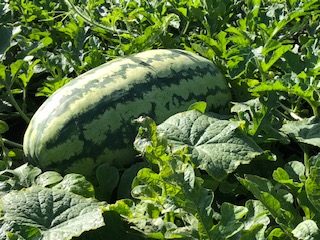But Is It Ripe?
When do you harvest watermelon?
There are several factors that indicate ripeness First, the underside ground spot turns from whitish to creamy yellow. Next look at the tendrils closest to the melon, they should be brown and shriveled. The rind loses its gloss and appears dull. And last but not least, when thumped the melon produces a dull thud, rather than a ringing sound.
Not just water and sugar
Watermelon has many health benefits. One is that it is loaded with antioxidant-rich vitamins such as vitamins A and C, minerals such as potassium, and phytonutrients, and is almost free of cholesterol, fat, and sodium.
How to Grow It.
Although watermelon requires a long growing season, if you start this sprawling plant early enough in the year, you can enjoy its fruits from late summer to early fall. Watermelons, like other vining plants, need plenty of space to grow. The seeds can be direct sown outside after the danger of frost has passed.
How did it get here?
Watermelon comes from Africa, namely Egypt, originally. Over time, watermelon spread to the Mediterranean and Europe before being brought to the Americas by colonists in the 16th century. The watermelon, pictured here in the watermelon patch, was grown by JCCW Master Gardeners in Colonial Williamsburg in the Orr garden off Francis Street where prime specimens like this one are donated to the local food banks.
For more information, here’s a video. We didn’t produce it but it’s full of good information, all PG. Not an endorsement. Watch here.


